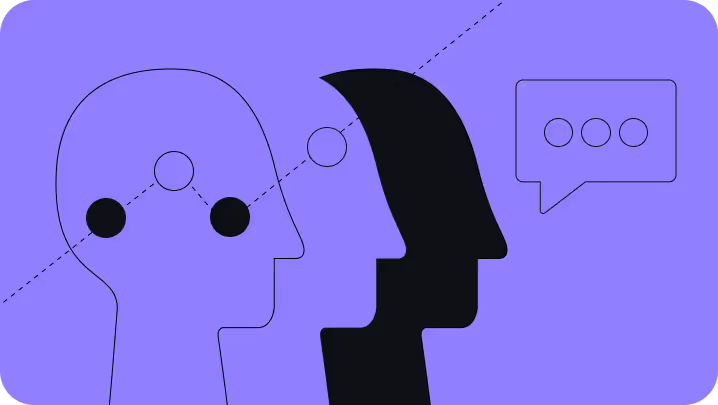The opportunity for educational institutions to use AI to support enrollment is wide open. The schools that have already taken the leap are saving time, getting smarter about how they use their data and wowing prospective students and families with individualized engagement. Still, in spite of all its benefits, getting AI up and running internally can feel like an uphill battle. We hear from enrollment marketing leaders all the time who have run into the same challenges—skepticism, concerns, and misconceptions from their own teams.
Whether it’s worries about job security, the environmental impact of AI, or just being attached to the old way of doing things, tackling these concerns directly can turn resistance into support. At the end of the day, adopting AI isn’t just about having the right tools—it’s about building a shared vision that everyone can get behind.
This blog explores three common personas you may encounter in internal discussions about AI adoption. For each one, we’ll break down their mindset, their concerns, and what you can do to earn their support.
Understanding the Personas
1. The Environmentalist
The environmentalists on your team care deeply about sustainability and ethical practices. If they’re hesitant about AI, it’s probably because they’re worried about its energy use and impact on the planet.
What’s on their mind:
- AI models and servers use a lot of energy, which adds to carbon emissions.
- Adopting AI could hurt the institution’s image if it goes against sustainability goals.
- Some people just feel strongly about protecting the environment and see this as a big concern.
Persuasion Strategies for the Environmentalist:
- Sustainable AI Practices: Look for cloud providers like Google Cloud or Microsoft Azure that prioritize renewable energy for their data centers. It’s also worth sharing how the AI community is working on energy-efficient models and tools to cut down on environmental impact.
- Eco-Friendly Innovations: AI can help reduce waste in so many ways! For example, smarter AI-driven marketing can cut down on paper use by replacing large-scale print materials.
- Institutional Alignment: Think of AI as a natural extension of your sustainability goals. It can help track carbon footprints or optimize resource-heavy processes, tying everything back to your bigger sustainability commitments.
By framing AI as a force for good rather than a resource drain, you can appeal to the Environmentalist’s core values and show that technology can co-exist with sustainability.
2. The Traditionalist
For Traditionalists, change isn’t just hard—it’s something they’d rather avoid. They value legacy methods and often feel unsure about AI stepping in to replace processes they trust.
What’s on their mind:
- Worry about losing the “human touch” in their work.
- Doubts that AI can really improve on proven methods.
- A strong preference for keeping things consistent with the organization’s identity and way of doing things.
- They may still think of AI as a "fad" that isn't worth investing in.
Persuasion Strategies for the Traditionalist:
- Show How AI Helps, Not Replaces: Let them know AI isn’t here to take over but to make your work even better. Think of it as a tool that handles the tedious stuff—like automating time-consuming tasks—so they can focus on building meaningful relationships.
- Highlight the Support for What They Already Do: Talk about how AI can enhance their current processes. For example, it could help deliver more individualized follow-ups after in-person events or make print campaigns and face-to-face counseling even more effective with real-time data insights.
- Make Training Easy and Inclusive: Build trust by offering simple, step-by-step onboarding that meets them where they are. Even better, get them involved in pilot programs, so they can see how AI works and even offer feedback before it’s rolled out.
By showing how AI adds value to what you already do, you can help Traditionalists feel confident, involved, and excited about trying something new.
3. The Pessimist
Pessimists can be tough to convince. They typically see AI as another overhyped trend that’s bound to flop. Their hesitation usually comes from a mix of mistrust in big promises and a fear of things going wrong.
What’s on their mind:
- They're unsure if AI will actually live up to the hype or fit into your current systems.
- They're worried about job security and whether their role might become obsolete.
- Concern that AI might be too complicated for your team to use or implement.
Persuasion Strategies for the Pessimist:
- Share Real Success Stories: Got skeptics in the room? Show them case studies with real, measurable results from similar institutions. Think higher enrollment rates, better efficiency, and more engaged students—all thanks to AI. Bring in experts or trusted voices to back you up if needed.
- Make AI Adoption Easy: Roll out AI in simple, manageable steps. Show off user-friendly tools and explain how they’ll make life easier for their specific role. Skip the confusing tech jargon—keep it clear and straightforward.
- Highlight Partnership, Not Replacement: Similar to the approach with Traditionalists, be upfront about how AI will change their role. Reassure them it’s about working smarter, not making anyone obsolete. By automating boring, time-consuming tasks, AI gives them more time to focus on the meaningful, human work only they can do.
Winning over a Pessimist takes time and patience. Be clear, transparent, and show real results and they’ll start to come around as their confidence grows.
Bringing the Team Together
Adopting AI is both a tech upgrade and a mindset shift. Everyone on your team brings a unique perspective, and it’s important to approach their concerns with empathy and care. Here’s how you can get everyone on the same page:
- Highlight the Benefits: Remind your team of what AI can do for them—better marketing results, stronger student engagement, and the ability to stay ahead of the competition. It’s a win for everyone.
- Work Together: Keep the process collaborative. Involve your team, ask for their input, and make them feel like they're part of the process. When everyone’s engaged, they’re more likely to be invested in making things work.
- Tackle Concerns Early: Check in regularly and address any worries as they come up. Open, honest communication is the key to building trust and easing doubts.
Adopting AI is ultimately about helping your team do their best work. When they understand why these changes matter, they’ll see AI as a tool that works for them—not against them.




